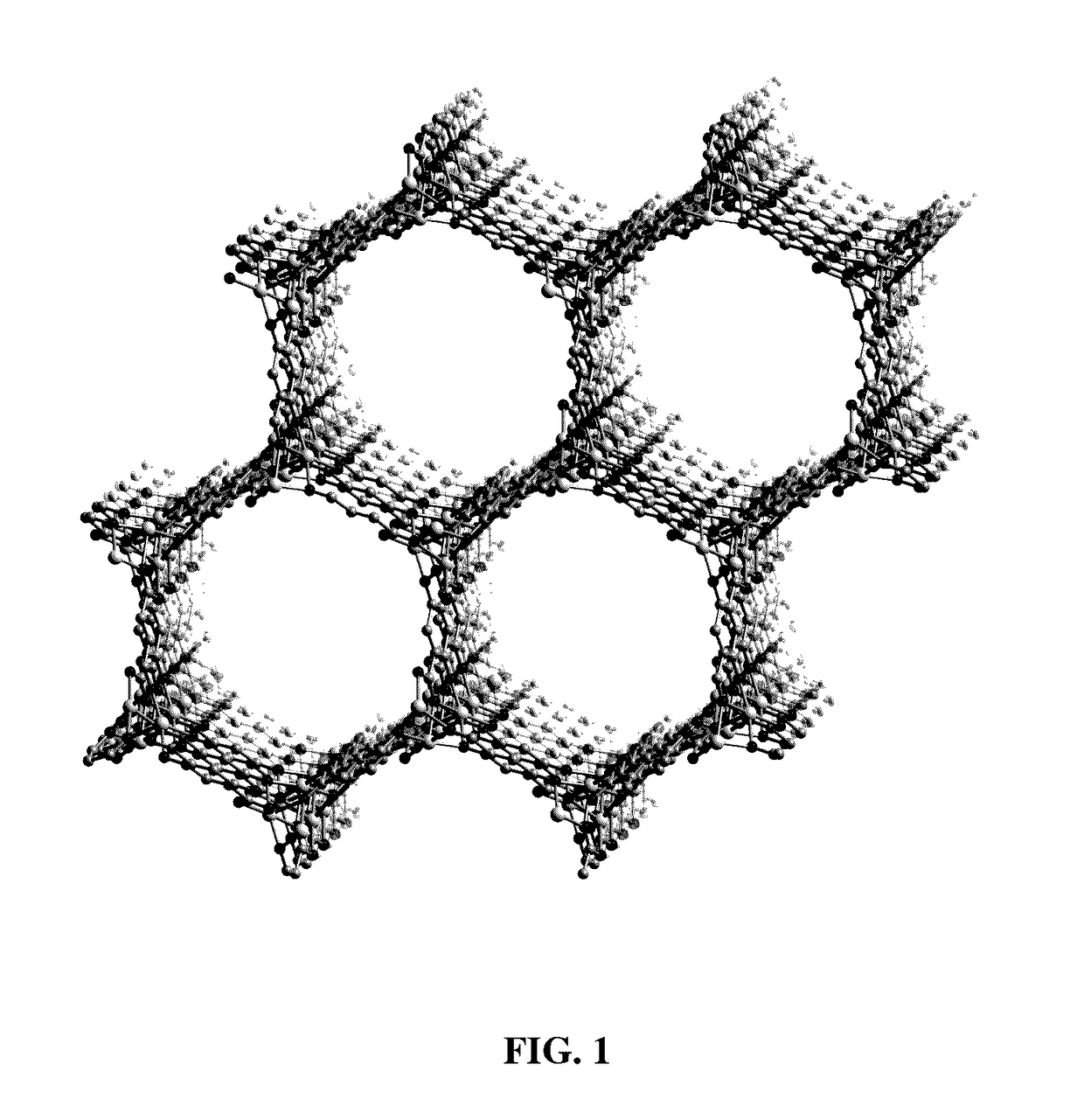Gas separations with redox-active metal-organic frameworks
a metal-organic framework and gas separation technology, applied in the field of fe2, can solve the problems of substantial energy penalty, inability to purify ethane, ethylene and acetylene being removed from the gas stream simultaneously, and inherently inefficient processes, etc., and achieve the effect of incredible separation properties
- Summary
- Abstract
- Description
- Claims
- Application Information
AI Technical Summary
Benefits of technology
Problems solved by technology
Method used
Image
Examples
Embodiment Construction
[0067]Described is a method of separating a target component from a chemical mixture using Fe2(dobdc). FIG. 1 is a portion of the crystal structure of desolvated Fe2(dobdc) as viewed approximately along the [001] direction (H atoms have been omitted for clarity.) This material has a metal-organic framework with a high density of coordinatively-unsaturated FeII centers lining the pore surface. This material can be used for the separation of O2 from N2 and in a number of additional separation applications based on selective, reversible electron transfer reactions. In addition to being used as an O2 separation material, it can be used for many other processes, including paraffin / olefin separations, nitric oxide / nitrous oxide separation, carbon monoxide removal, acetylene storage, and as an oxidation catalyst.
[0068]The high surface areas and open metal coordination sites possible within metal-organic frameworks make them particularly attractive for the development of an adsorption-based...
PUM
| Property | Measurement | Unit |
|---|---|---|
| temperature | aaaaa | aaaaa |
| pressure | aaaaa | aaaaa |
| temperature | aaaaa | aaaaa |
Abstract
Description
Claims
Application Information
 Login to View More
Login to View More - R&D
- Intellectual Property
- Life Sciences
- Materials
- Tech Scout
- Unparalleled Data Quality
- Higher Quality Content
- 60% Fewer Hallucinations
Browse by: Latest US Patents, China's latest patents, Technical Efficacy Thesaurus, Application Domain, Technology Topic, Popular Technical Reports.
© 2025 PatSnap. All rights reserved.Legal|Privacy policy|Modern Slavery Act Transparency Statement|Sitemap|About US| Contact US: help@patsnap.com



